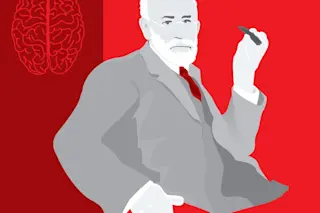The party is at a trendy Harlem restaurant, in the private rooms downstairs. It is crowded and, for a science event, glamorous. Many women are in sparkly cocktail dresses. Men are wearing expensive ties. Everyone has fashionable eyewear. Over at the bar is the goateed Joe LeDoux, known for his groundbreaking research on fear, as well as for his rock ’n’ roll band of scientists. The celebrity chef who owns the restaurant is personally greeting guests.
This gathering is unusual for other reasons. A benefit for the Neuropsychoanalysis Foundation, it is celebrating the idea that psychoanalytic concepts like repressed impulses and unconscious drives remain important and relevant in this era of the neurobiological study of the brain. If that seems surprising, so will this: Sigmund Freud, the creator of psychoanalysis, actually began his career as a neurobiologist, dissecting the nerves of crayfish.
But in his late 19th-century era, brain science ...














